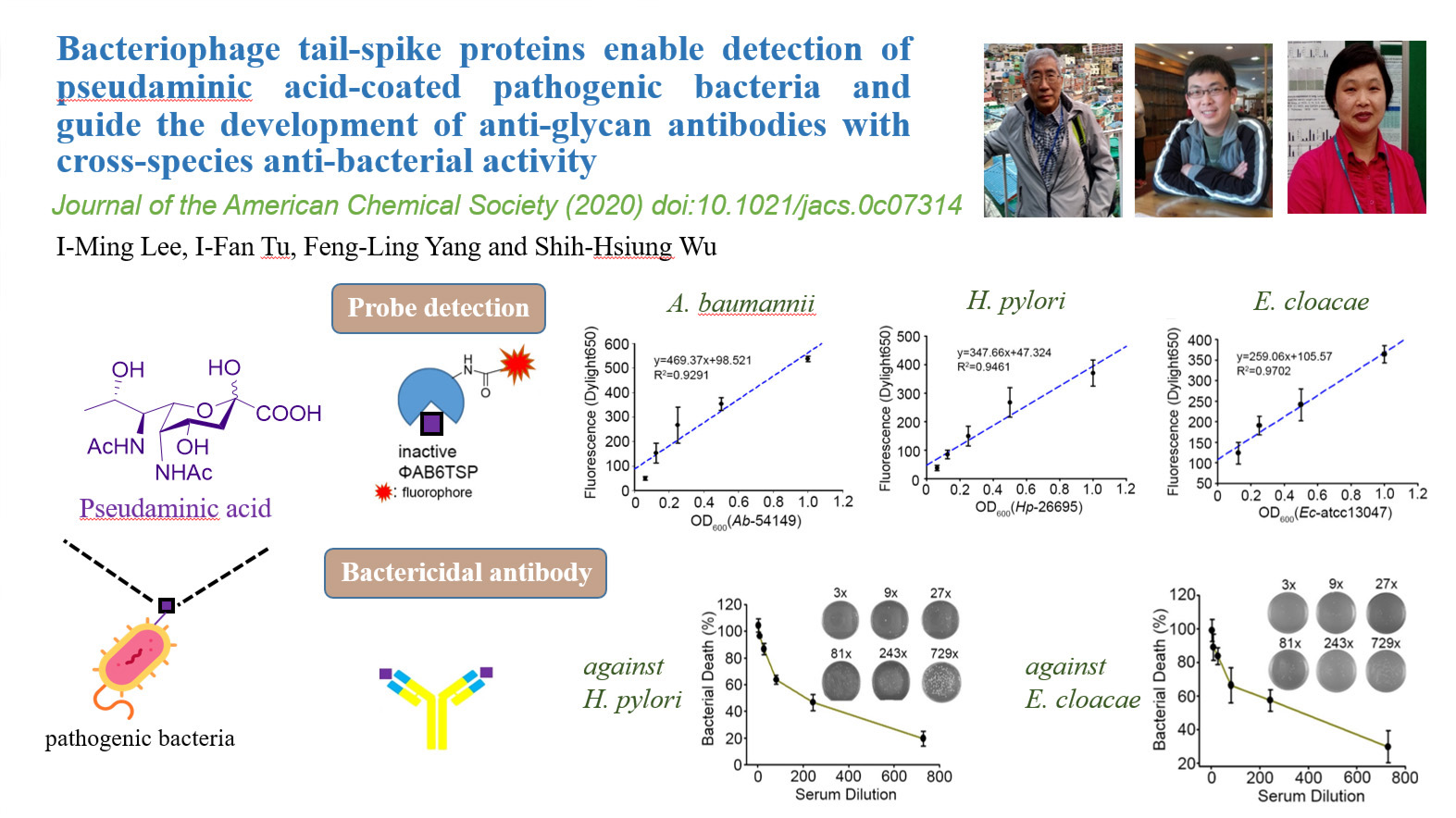
 中央研究院 生物化學研究所
中央研究院 生物化學研究所
Pseudaminic acid (Pse), a unique carbohydrate in surface-associated glycans of pathogenic bacteria, has pivotal roles in virulence. Owing to its significant antigenicity and absence in mammals, Pse is considered an attractive target for vaccination or antibody-based therapies against bacterial infections. However, a specific and universal probe for Pse, which could also be used in immunotherapy, has not been reported. In a prior study, we used a tail spike protein from a bacteriophage (ΦAB6TSP) that digests Pse-containing exopolysaccharide (EPS) from Acinetobacter baumannii strain 54149 (Ab-54149) to form a glycoconjugate for preparing anti-Ab-54149 EPS serum. We report here that a catalytically inactive ΦAB6TSP (I-ΦAB6TSP) retains binding ability toward Pse. In addition, an I-ΦAB6TSP-DyLight-650 conjugate (Dy-I-ΦAB6TSP) was more sensitive in detecting Ab-54149 than an antibody purified from anti- Ab-54149 EPS serum. Dy-I-ΦAB6TSP also cross-reacted with other pathogenic bacteria containing Pse on their surface polysaccharides (e.g., Helicobacter pylori and Enterobacter cloacae), revealing it to be a promising probe for detecting Pse across bacterial species. We also developed a detection method that employs I-ΦAB6TSP immobilized on microtiter plate. These results suggested that the anti-Ab-54149 EPS serum would exhibit cross-reactivity to Pse on other organisms. When this was tested, this serum facilitated complement-mediated killing of H. pylori and E. cloacae, indicating its potential as a cross-species antibacterial agent. This work opens new avenues for diagnosis and treatment of multidrug resistant (MDR) bacterial infections.
